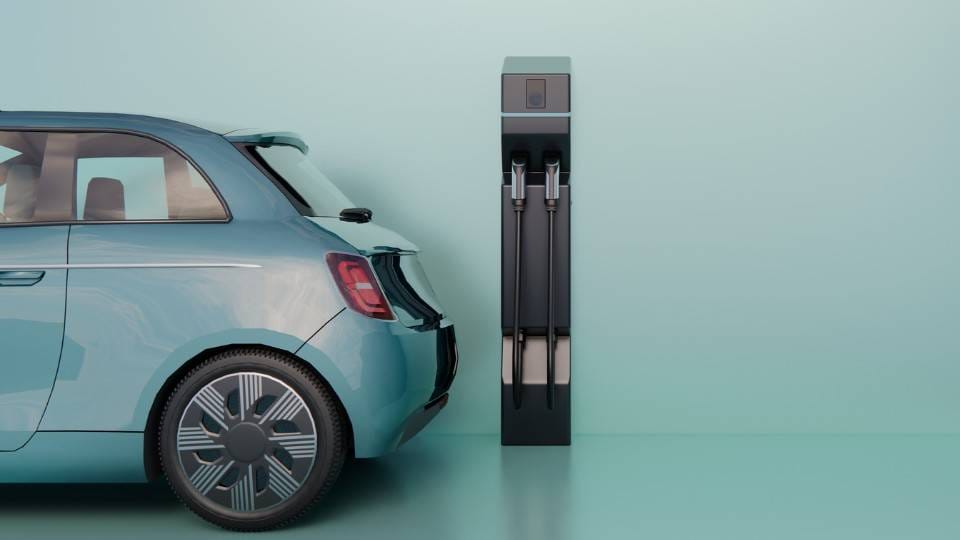OK, this is going to be a big topic to cover, so hopefully, you have a large cup of coffee ready.
First of all, this article will not tell you whether to buy the latest Tesla Model 3 convertible, Model X, or a Nissan Leaf.
What I‘m aiming to do is guide you through the all-important process of figuring out whether a fully electric vehicle is actually going to work for your personal needs.
It’s a problem I had for a few years.
And only when I spent several weeks researching what I needed and what the car industry is able to deliver was I able to come to a conclusion about a possible EV switch.
I’ll cover some EV basics, differences to plug-in hybrids, working out your range needs, what charging times to expect, and a whole lot more.
Let’s get started.
What Is an EV Vehicle, And How Does It Work?
Electric cars might look like they ultimately do the same thing because they have a throttle, brake, steering wheel, and four wheels on the road.
But it’s how your right foot action translates into motion that things are so different.
Let me explain.
An Induction Motor Replaces the Combustion Engine
Now, I won’t get into a physics lesson here to tell you how the induction motor that Nikola Tesla invented over 100 years ago works in detail.
But I do want to provide you with the main concept so that you understand how they are so different from internal combustion engines and why they are so much smaller.
A typical induction motor has an internal part that rotates and makes the wheels turn.
It’s conveniently called the rotor.
Surrounding the rotor is the stator which produces a rotating magnetic field. As that magnetic field spins in a circular motion, it forces the rotor to turn, and that torque transfers to the car wheels putting it into motion.
And the more electricity that flows into the stator, the more torque it generates and the faster the car will go.
Now let’s look at where the electricity comes from.
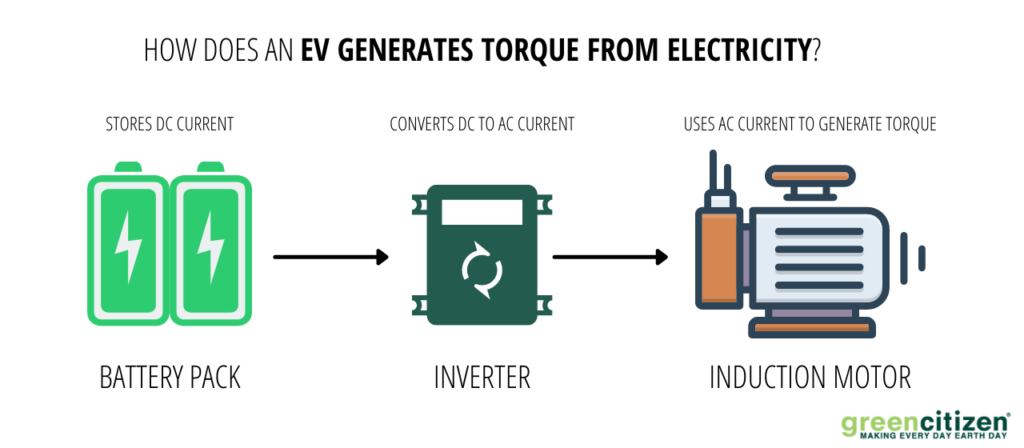
The Motor Gets Juice from Batteries
What surprised me the most about EVs is that the battery technology they use is pretty much identical to the battery in the smartphone, tablet, or notebook you’re using to read this article.
What EV manufacturers do is combine lots of lithium-ion battery cells and attach them to the full length of the chassis.
Essentially, when you sit into an EV, you’re sitting on top of the battery pack.
One other thing I should mention to make sure I avoid criticism from physics teachers is that the electricity coming out of the battery pack is DC, meaning direct current. But the induction motor mentioned above requires AC, meaning alternating current.
For that to happen, EVs also have an inverter that acts as the powerhouse of the car. It’s this device that modifies the electric current to either speed up or slow down the car.
OK, that should be enough theory, but for those science nerds like me out there who want to understand these motors a bit more, definitely check out this YouTube video:
Why Should You Consider Buying An Electric Vehicle?
OK, so we’ve covered the high-level technology of electric cars without making you fall asleep.
Now it’s time to highlight why buying an electric car should be something you seriously consider.
Mother Nature Will Thank You!
This one should be at the top of everyone’s list, but there are some things to keep in mind.
First of all, when you drive an electric car, there are no emissions coming out of the tailpipe. That means that your car won’t be directly causing harmful air pollution that people breathe in or that contributes to climate change.
What that means is that when more people in cities switch to EVs, then the air quality in those cities will drastically improve.
But what about the CO2 emissions tied to the electricity you charge your EV battery with?
Carbon-Free Transportation System
Currently, a large portion of electricity still comes from non-renewable and polluting sources, so you’ll need to consider making some changes with your utility provider.
Some electricity providers allow you to pay a slightly higher rate for 100% renewable energy. Or you may need to consider a solar panel installation.
Those are topics I’ll aim to cover in a follow-up article to this one.
But by making the switch to an electric car, you’re building the foundation for a carbon-free transport system once the energy supply catches up.
It’s CHEAPER!
Here’s where things get interesting.
If you have an electricity provider that offers discounted night rates, then you could be recharging your EV at a very low rate. And with smart home charging stations, you can even connect and forget about the charging by setting a schedule where it will only charge at the lowest rates.
When you work out the cost per mile for EVs charged at those low rates, you should be looking at 50% lower running costs or even less.
And then there’s the lower maintenance costs, cheaper annual services, and far fewer mechanical components to break down.
I’ll tell you more about those shortly.
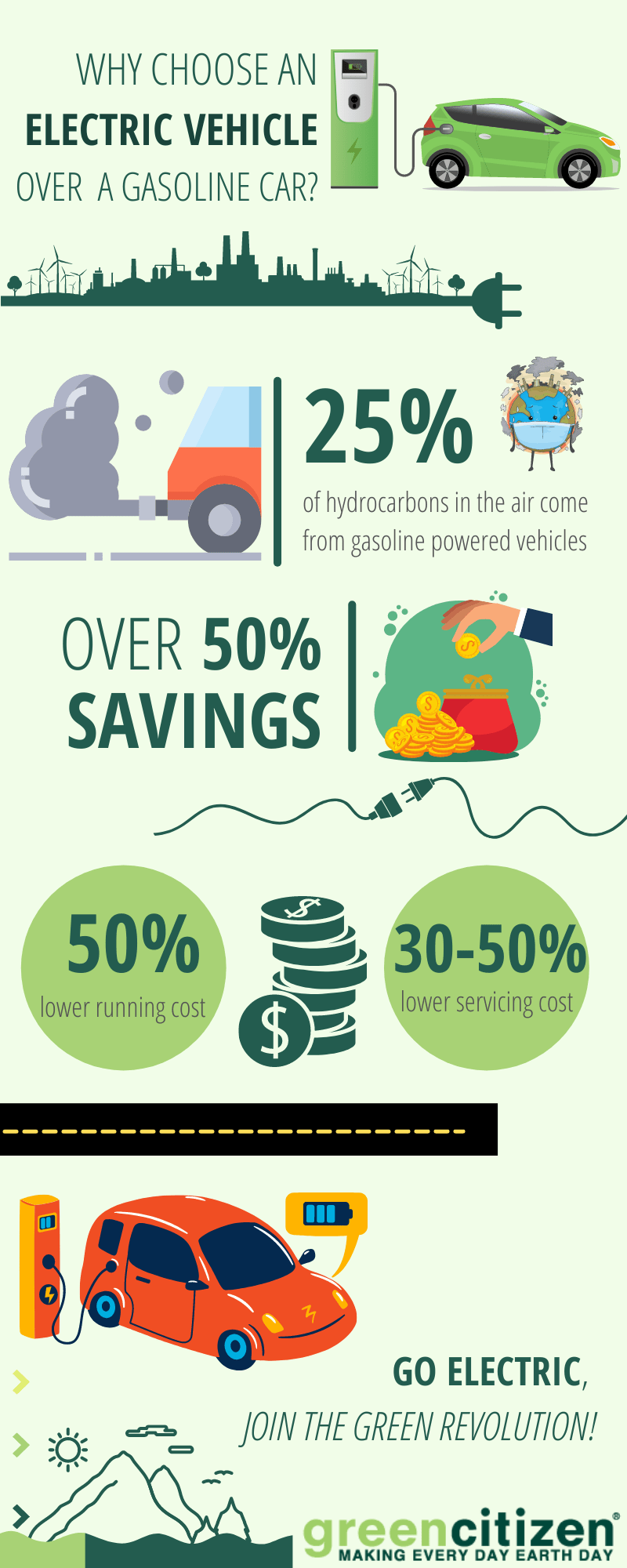
What Are The Different Types Of Electric Vehicles?
This caused me a lot of confusion when I started my research, so I thought it might help to give you a quick explanation of the four main types of EVs.
Hybrid Electric Vehicles (HEVs) or Full Hybrids
These are the types of electric cars that have been around for about 15 years, and they combine a gas-powered engine with an electric one.
The Toyota Prius was one of the first of these vehicles, and it roughly works like this.
The electric motor kicks in at lower speeds, usually up to around 30-40 mph. When you go above that speed, then the gas-powered engine steps in.
And if you run low on battery power, then the combustion engine is there to allow you to continue your journey.
It’s a type of electric car that can significantly increase your miles per gallon, especially if you live in an urban area and typically drive at slower speeds.
Mild Hybrid Electric Vehicles (MHEVs)
The next type of electric cars I want to mention are the mild hybrid ones.
From a very high-level point of view, these are diesel or gas-powered cars with a small 48-volt battery. This battery supports the air conditioning, lights, power steering, and radio, just like in every other car.
But it’s also large enough to support a small electric motor to boost acceleration power.
But, it’s important to understand that such an electric car cannot run on just the electric engine, so there will always be exhaust gases and pollution.
There are only a few of these on the road, and companies like Toyota have abandoned this approach for the more effective and efficient hybrid and fully electric technology.
A special edition Chevrolet Silverado is a good example of a mild hybrid electric vehicle. Initially, it was only available in California in 2016. Later, it got a nationwide release in 2018 was called Chevrolet Silverado LTZ.
Next, let’s see what plug-in hybrids have to offer.
Plug-In Hybrid Electric Vehicles (PHEVs)
Plug-in hybrids have possibly been the most popular types of eco-friendly vehicles for the past few years. Since most car makers have announced a transition to eco-friendly vehicles, pretty much all carmakers have a few of these in their lineup.
The way a plug-in hybrid works is by combining the technology of hybrid and electric vehicles.
They have quite a powerful electric motor with a significant amount of battery storage that you can recharge using a charge point. The gas engine then only kicks in when the battery storage is too low, giving you the advantage of not running out of power to keep going.
2021 Mitsubishi Outlander, 2021 Toyota Prius Prime, and the new 2021 Jeep Wrangler 4xe are great examples of plug-in hybrids.
Battery Electric Vehicles (BEVs) or Simply EVs
Battery electric cars are the ones that don’t have any kind of gas or diesel fueled combustion engines.
Two common and good examples of this type are the Tesla Model X and Model 3, which are among the most popular fully electric vehicles available,
This is where the future of car manufacturing is, with all major car companies making announcements that they will fully switch to electric engines over the coming 5 to 15 years.
This is also the area where the biggest technological breakthroughs are happening to give cars a longer range as well as much faster recharging times.
More on that shortly.
Working Out The Battery Range
OK, so we’ve covered the technology behind electric cars and how they compare to other types of hybrid vehicles.
My personal research then focused on figuring out whether a fully electric car would be suitable for my needs, and that meant seeing how the battery range would work out.
See, when the first electric cars came out a few years ago, they would often be very small cars that had a range of maybe 50 miles.
That’s fine if you live in a city with a short commute.
But it just didn’t work for me when I regularly had to drive twice that distance in a day. Now, things have changed a lot, and many carmakers are advertising battery ranges in the hundreds of miles.
But you have to be careful not to take those headlines at face value.
Here’s what I mean.
Maximum Battery Range
Every EV will have a maximum electricity storage capacity indicated in kilowatt-hours, or kWh. This is an international standard measurement and is comparable to gallons or liters of gasoline or diesel.
So, you might see a Tesla Model X with up to 100 kWh storage. With that information, you can then work out how far you can get on each charge.
You’ll see this usually listed as a certain amount of kWh per 100 miles (or 100 km in Europe).
For example, you could have an EV with a 100 kWh battery pack and power consumption of 24 kWh per 100 miles.
That would give it a theoretical range of almost 400 miles.
Impact Of Speed And Temperature
Now, I mentioned above that you couldn’t take those headline-advertised ranges at face value.
And the reason is that just like with a gas-powered car, your driving style and speed will significantly impact the range.
So, if you spend a lot of time driving on a highway at 75 mph, then you’ll use up a lot more electricity than if you drive at 60 mph.
In many cases, manufacturers measure those headline ranges at an average speed of around 50 mph in ideal conditions where there isn’t a huge amount of acceleration and stopping.
The other thing that heavily influences the efficiency of batteries is the operating temperature. Most batteries have the highest efficiency between 60 and 85 degrees Fahrenheit (15 to 30 degrees Celsius).
And you could lose about 25% efficiency in the winter months when temperatures head for freezing and lower.
Realistic Ranges
There are two things you can do to work out the realistic range of an EV.
First, you can check some independent third-party testing results where an electric car is used under different urban and suburban driving conditions over a couple of weeks to see what the average range is.
The other thing you can do during your research is to take the headline range and subtract about 20% to get a more realistic average range.
OK, so we’ve also covered the battery range; now it’s time to consider what your charging options are.
What Are Your Charging Options?
There are two options you have when it comes to charging electric cars.
1. Home Charge Point

Most electric vehicles will allow you to charge even when connected to a standard socket at home.
But that could mean it takes two days to just get to 80 percent charged.
Instead, what you’ll need to consider is investing in a wall charge point with up to 7 or 8 kW output. For a 50 kWh battery pack, that would allow you to pretty much fully charge the EV overnight.
But you have to keep something in mind.
Those wall chargers are only possible if the car and socket are both going to be on private property. If you have to park your car in a public parking space, then you won’t be allowed to just run the charging cable to your EV.
In that case, you would be reliant on public charging points.
2. Public Charge Point

Publicly available recharging sockets were few and far between for a long time, and that turned many people off buying an EV.
But there has been a huge increase in public and private investment in high-speed public charging points. And in most countries, there are now widespread charge points that make longer trips with an EV possible.
In some cases, these high-speed charge points can achieve an 80 percent charge in less than 20 minutes. For many modern EVs, that would mean getting another 200 miles in 20 minutes or less.
Some older level 2 chargers with 240-volt output would take up to 10 hours to fully charge an EV, but they are gradually being replaced.
And the technology is improving every year, meaning that it should be possible to compete with gas refueling soon.
What’s also great is that the operators of charging networks have clever apps available where you can simply search for a charge point that is free right now so that you don’t have to drive around trying to find available chargers.
How Long Does It Take To Charge An EV?
The speed at which you can recharge the batteries in your electric car depends on two things.
Charge Point Power Output
The typical power output for a dedicated level 2 home charging point is typically around 7kW. That would mean that it would take about 5 to 6 hours to fully charge a 35 kWh battery pack.
But things get a lot more interesting with public charging points where the output will far exceed the level 2 output.
Some of the most advanced chargers available can provide up to 350 kW, and that will provide the basis for very fast charging indeed.
Now, there are two things to consider.
First of all, the higher the charging output is, the more you’ll have to pay per kWh.
More importantly, though, even if you hook an EV up to one of those very fast chargers, it doesn’t mean that your vehicle will be able to accept that kind of output.
Let me explain.
Maximum Battery Charging Speed
Every type of battery in EVs will have a maximum capacity when it comes to the incoming power from a charger.
So, even if you hook up to a 150 kW charger, if your batteries are only capable of dealing with 100 kW, then that’s the maximum value you need to use to calculate your recharge speed.
This also means that it’s often not worth hooking up to the fastest chargers available. You’ll pay a higher price per unit and not get the full advantage of the most efficient technical speeds.
How Much Does It Cost To Run An EV?
Another big question for electric cars is the running cost, and that depends on where you’ll predominantly recharge your battery.
Public Recharging
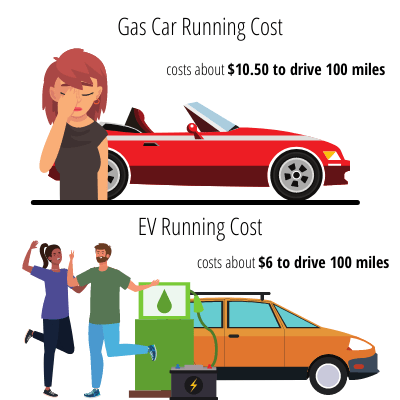
The majority of public recharging stations tend to offer 50 to 75 kW chargers, and the price is about $0.22/kWh.
So, if you take a Hyundai Kona with an energy usage of about 27 kWh per 100 miles, then it would cost about $6 to drive 100 miles.
Now, if you compare that to the gasoline Hyundai Kona which achieves about 3.3 gallons per 100 miles, then you’d be looking at a running cost of about $10.50 per 100 miles based on an average of $3.2 per gallon.
That potentially makes the running cost of an EV 50% lower than gasoline-powered ones, but it gets even more interesting when you charge an electric car at home.
Recharging At Home
One thing you have to keep in mind when recharging at home is that you could be paying vastly different rates depending on the time of day.
What you need to check is what times your utility provider charges the lowest rates, which is usually going to be during the night.
In some places, that rate can be as low as $0.09 per kWh.
Taking the same Hyundai Keno mentioned above, you could travel 100 miles for less than $2.50 or about a quarter of the equivalent gasoline-powered car.
Now, to get that cheap nighttime rate, you may need to make sure that the home charging socket you install has a smartphone app integration.
This allows you to set only certain times to charge your EV at the lowest possible price.
Maintenance And Servicing Costs
This is another area that I was particularly interested in, as the technology in electric cars is so drastically different from the internal combustion engine one.
Regular Servicing
A typical fully electric car is going to be significantly cheaper to bring for your annual service.
The reason is quite simple.
There is no engine oil, oil filter, fuel filter, air filter, or clutch that requires careful inspection, draining, and replacing. That means the main components for servicing are the electric motor, brakes, and suspension.
Depending on the brand and vehicle type, you could be saving 30% to 50% in servicing costs compared to a gasoline or diesel car.
Typical Repairs
Because EVs have much simpler engines and no clutch or alternator, there are also far fewer regular repairs for worn or broken components.
For example, most gas and diesel engines will require a timing belt replacement every five years or 60,000 miles. That can cost anywhere from $500 to $800.
A new alternator would cost you about the same, and let’s not even consider the price you’d pay for a head gasket replacement or a damaged clutch.
But there is one thing you have to consider, and that’s the batteries.
Battery Packs
You’ve probably experienced an old laptop, tablet, or smartphone not holding its battery power as well as when it was brand new.
It’s an unfortunate effect with all rechargeable batteries, and the more you recharge them, the more they will age.
But most manufacturers now offer warranties on the batteries for up to 8 years or 100,000 miles. For many owners, that will be about the typical lifetime of a car, but if you want to drive an EV for a lot longer, then you may need to factor in the price of replacing the batteries.
And that could be upwards of $5,000.
Electric Car Vs. Gas Car
OK, so we’ve looked at the various technologies and costs involved in running an EV. Now it’s time to look at how an EV compares to a gas vehicle in regular driving situations.
Engine Performance
Many people think that an electric vehicle wouldn’t stand a chance against a modern muscle car.
But you’d be very surprised how a modest EV engine of a Hyundai Ioniq will actually perform. 0 to 60 mph will happen in just over 8 seconds. And with the highly popular Tesla Model 3, you’ll achieve the same in just over 4 seconds.
And the latest Tesla Model S has been clocked at 2.4 seconds, which is a current record for a production car and faster than a Formula 1 racing car.
So, if you’re looking for acceleration, then EVs are the way to go.
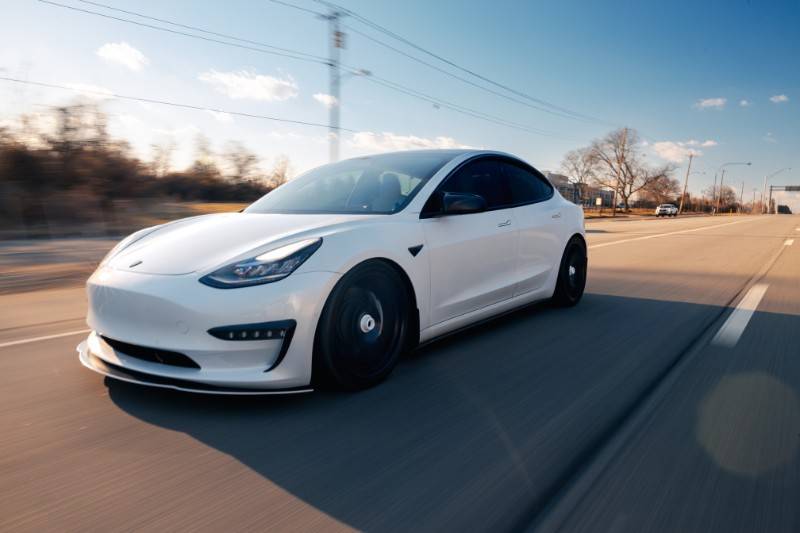
Towing Capabilities
This is an area where electric vehicles had fallen behind gas and diesel cars. For example, a Dodge RAM with the largest V8 and all the suspension add-ons can achieve a towing capacity of over 12,000 pounds.
If you’re working in construction or regularly pull a heavy boat, then that might be important.
But for most of these owners, it seems to be more about bragging rights.
Now, currently, there are only limited full-size trucks on the EV market, but that doesn’t mean that it won’t be possible for electric cars to compete.
With a large enough engine on each wheel and the fact that these engines achieve instant maximum torque, there is no reason why they won’t out-compete.
But if you absolutely need to pull very heavy trailers right now, then an EV is probably NOT the right choice right now.
Driving Experience
I was personally a little suspicious about electric vehicles and how they would be to drive.
The reason for this is that I always drive a manual stick shift. But I also had concerns about how the car would react to acceleration and breaking.
When I test drove an electric car for the first time, I was pleasantly surprised.
As soon as you put your foot on the accelerator, there is no delay or turbo lag. You instantly feel maximum torque kick in, which explains the fast acceleration times mentioned above.
The one thing that is very different is the fact that an electrically powered car doesn’t have to change through gears with an automatic clutch and gearbox.
But even that took no more than a few minutes to get used to. And once I experienced the much faster acceleration for overtaking, I found it to be a much more pleasing driving experience.
Overall Purchase Cost
Right now, EVs are more expensive to buy than gasoline-powered cars, and it’s mainly down to the cost of the batteries.
For example, the standard Hyundai Kona SUV comes with a price tag of about $21,000. But the same SUV as an electric vehicle costs $34,000.
I know it’s a steep difference, but it doesn’t factor in the tax credit you can get.
And that’s my next topic.
Federal And State Tax Incentives
At a federal level, there is a tax credit on electric vehicles that is worth up to $7,500 depending on the technology, battery size, and price of the vehicle.
Fully electric vehicles get a higher tax credit than plug-in hybrids, and it’s always important to look at the most up-to-date list of federal tax incentives.
On top of that, some states also offer incentives. For example, in California, there’s a rebate worth up to $4,500 for a hydrogen fuel cell car, $2,000 for a battery EV, and $1,000 for plug-in hybrids.
So, for a full battery EV, you could save up to $9,500 on the purchase price, which takes the majority of the additional cost out when compared to a gasoline-powered car.
Buying A New Vs. Used Electric Vehicle
Just like with a regular gasoline-powered vehicle, many people will consider buying a second-hand EV. But there are a couple of things to keep in mind.
Battery Degradation
I mentioned above that batteries gradually reduce the amount of energy they can store with time and usage.
That means that you have to carefully look at where a pre-owned EV was used and how much it was driven and recharged.
That can have a significant effect on how long you can expect the batteries to last before they might need replacing.
Outdated Technology
EV motor and battery technology are changing almost as fast as computer technology.
Batteries are becoming more efficient, and engines are more powerful with less energy consumption. And that means that a 3-year old EV might as well be from the last century.
So, when you calculate the expected ranges and savings compared to a gasoline car, you have to base those calculations on older technology.
That’s where the savings might not be as good.
Price
Prices are dropping considerably for pre-owned EVs, and that’s where you could have a significant advantage.
For example, let’s say you don’t drive a lot, won’t need a huge range, and you’re not too interested in lightning-fast acceleration. Then, a three or four-year-old EV could prove significantly cheaper and still give you everything you need.
Choosing The Right Vehicle For Your Personal Requirements?
In order to make that final decision about whether buying an electric car is going to be suitable for you, here are the three main areas to consider.
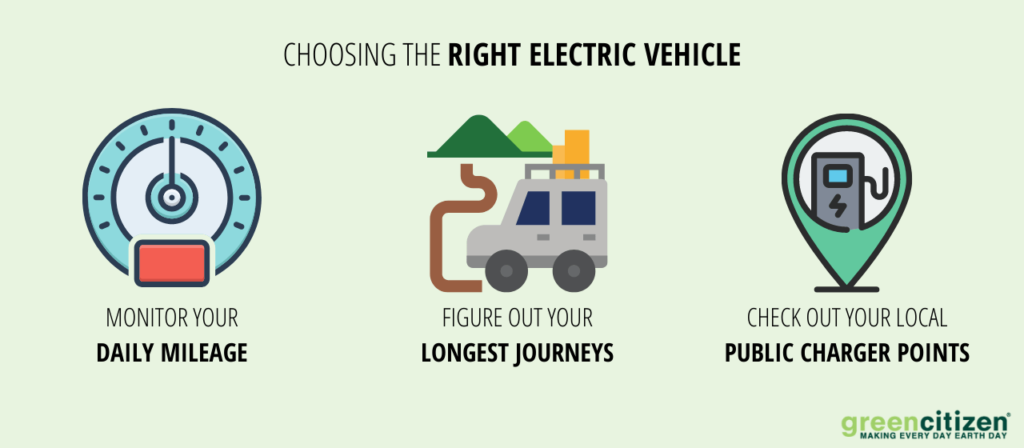
Monitor Your Daily Mileage
Start to use a logbook or see if your existing car has smart features that track all your journeys.
What you want to figure out is your average daily traveling distance. For most people, it’s going to be way less than 200 miles, and that means that most modern EVs will have you well covered for the day.
You might be running low by the time you park at home, but you’ll be fully charged by the next morning.
Some popular options that will suit this mileage are the Chevrolet Bolt with 250 miles range and the Nissan Leaf with up to 220 miles on a full charge.
Figure Out Your Longest Journeys
The next thing you need to work out is whether there are regular journeys you take that are longer than 200 miles. Maybe it’s a 400-mile trip to visit your parents once a month. Or maybe it’s a 600-mile drive once a year to your favorite vacation spot.
Unless you’re doing these kinds of trips on a daily basis, EVs are still a suitable solution.
In both cases buying a car with a 300 to 350-mile range would require one fast charge taking about 20 to 30 minutes to give you 80% range. And given those distances, you should be taking at least one brake to avoid driving fatigue.
The Tesla Model 3 and Model X both provide a range of just over 300 miles with larger battery packs.
And there are many more manufacturers pushing those ranges closer to 400 miles.
Check Out Your Local Public Charger Points
And finally, sign up for a few of the public charge services and search the maps for all the available charge points.
Also, do this for the longer journeys you go on to see if there are enough options along those routes.
If all these three things check out for you, then a modern EV is going to be a great choice for you.
Hopefully, this buying guide has given you all the information you need to make your personal choice. But if there are some questions that are still unanswered, then post in the comments, and I’ll try to answer them.

